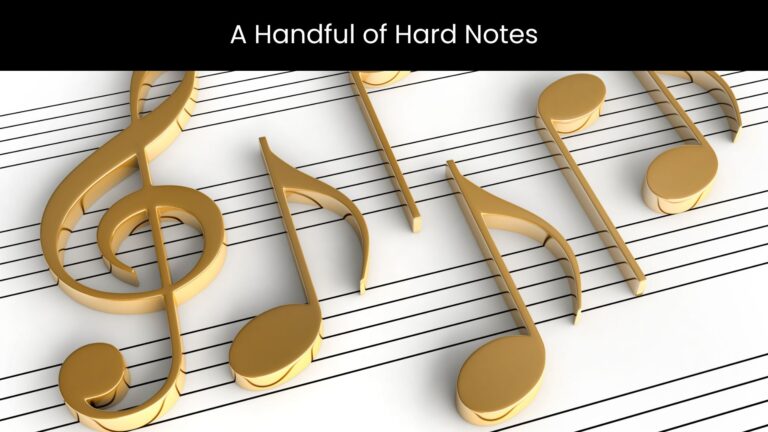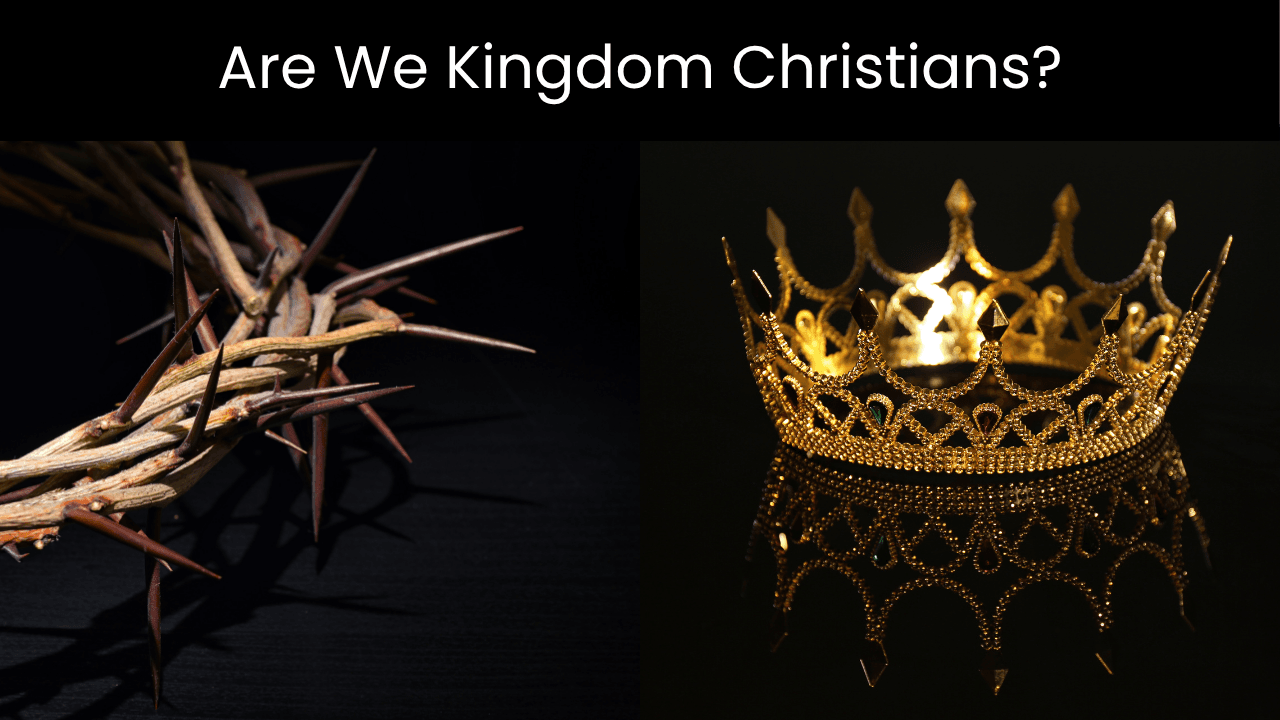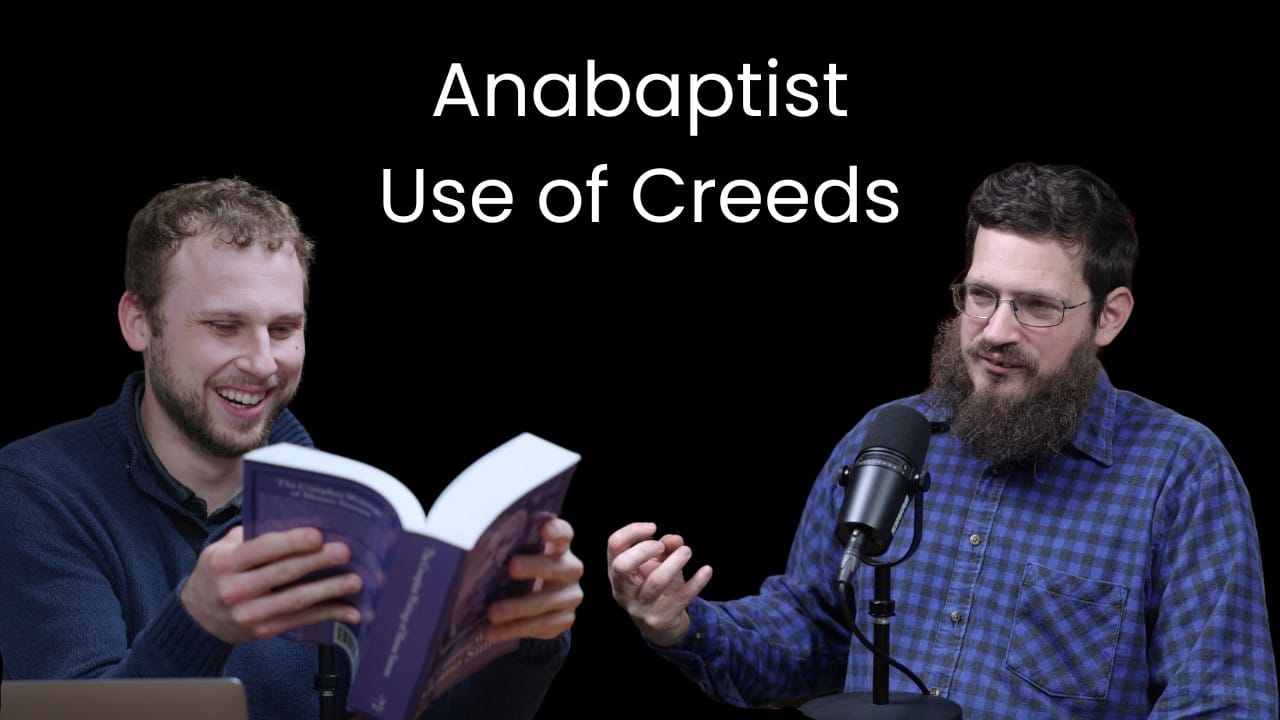A Handful of Hard Notes: Five Historic Questions about Music
The original edition of this article was published in Hearts & Voices, Winter 2013.”
“How shall we sing the Lord’s song in a strange land?” i The captive Hebrews’ question has echoed down through 2,000 years of Christian history. From grand church councils to backroom committee meetings, the discussion goes on. “We know we should sing, but what kind of song is most appropriate in public worship?”
Unfortunately, the discussion hasn’t always remained calm. Controversies over church music have frequently boiled over into accusations and schisms. In the denominational upheavals of the late 20th century, the conflict was so widespread that the term “worship wars” was coined. A lamentable oxymoron perhaps, but it does tell us something significant. The saints are seldom passive about changes to their corporate worship routine.
Singing in the worship assembly is so much more than an intellectual exercise. It is a baring of hearts, a vulnerability that binds together the brothers and sisters. It is the faith of the brotherhood taking flesh.ii We are voicing our identity, personally and collectively, when we join in congregational song. That’s why we often have greater tolerance for a confusing sermon than for a strange song.
If the old saying is true that people go wrong first in their worship, then it matters very much that we keep evaluating our congregational singing. Is it as Biblical as it should be? Is it really the best “sacrifice of praise” we could bring to God? Have we fallen into comfortable habits that insulate us from being disturbed by the sung Word?
Congregational singing is vital to the very concept of brotherhood. If we forget to nourish it, or fail to examine it, we will become vulnerable to both spiritual torpor and brotherhood attrition.
We no longer sing like the apostles did. Does it matter? Plenty of warm conversation has shaped the way we sing in church every Sunday morning. Before we join the conversation, we should review what the church has already talked about. What follows here is a brief survey of the five main questions that have plagued discussions about congregational singing. It does not attempt to fully answer the questions or build theological bulwarks around our own singing style.
1. Who shall sing?
To believers within the tradition of a cappella congregational singing, this seems like an odd question. But the answers throughout the church age have been diverse. Singing in the early church, modeled on Jewish synagogue worship, included the whole assembly.iii By the third century, some leaders banned women from singing in church because it was deemed inappropriate.iv (Thirteen centuries later, certain of the English Baptists argued that women singing in church violated the Pauline injunction for them to keep silent.v)
In A.D. 367 the Council of Laodicea banned congregational participation in the worship service.vi For the next 1,000 years in the Western church, singing in public worship was largely performed by monks or special choirs of men and boys.
Martin Luther brought congregational singing back into the church as the birthright of the people. Other Reformation traditions followed his lead and congregational singing became a standard feature of Protestant and Anabaptist worship since then.
Today many churches have once again lost congregational singing, but not by church decree. Rather, the common believer’s voice has been drowned out by professional worshipers—choirs, organists, or praise bands.
The untrained worshipper must always feel welcome to open his mouth in song. Any aspect of church music that discourages congregational participation, whether intentional or unintentional, denies two crucial Christian doctrines: (1) the priesthood of all believers, and (2) the community of the believers. We sit in common assembly and bring our sacrifices of adoration directly to God.
Naturally, this limits the complexity of the music. What congregations do best is unaccompanied unison singing.vii John Calvin and others insisted that harmony is not befitting to the simplicity and unity of Christian worship. We cherish our 4-part singing, but it is the melody “with one voice” that has been most characteristic of Christian worship.viii
2. Shall we sing God’s Word or man’s word?
While the Apostle Paul recommended “psalms and hymns and spiritual songs,” the historical record of early Christian singing is rather sparse. They certainly used the Psalms as their primary texts, and to this they added a handful of canticles, which were key Scripture passages of a lyrical style. Common canticles included the song of Moses (Deut. 32), the song of Mary (Luke 1), and the song of Simeon (Luke 2).ix
Hymns, defined as songs of praise not quoted directly from Scripture, do not appear until around the third century A.D. Over the centuries since, the question has repeatedly arisen, “Is it appropriate to sing words of human invention in church, or should we stick primarily to the actual words of Scripture?”
Medieval church councils disagreed but stayed mostly on the side of Scripture. Luther came out strongly in favor of hymns. Calvin prohibited all hymns,x thus starting the Reformed tradition of psalm-singing which became normative for non-Lutheran Europe for the next 300 years.xi That is why the early English hymns of Watts were controversial. In fact, the Church of England did not officially condone the use of hymns in worship until 1821, long after the hymns of Watts and Wesley had swept the English-speaking churches.xii
The first Anabaptists used a small variety of psalms and Scripture songs, but primarily took their hymn-singing cues from their Lutheran environment. Subsequent early American Mennonite hymnals still included sizable sections of metrical psalms translated from French psalters.xiii Our current English hymnals have very few metrical psalms; we prefer the Wattsian paraphrases.
Whether or not to sing the words of Scripture in church is not even a controversy in the conservative Anabaptist churches today. With very few exceptions, Scripture passages are not sung at all. In light of early church practice, Scriptural admonition, and the long tradition of the Christian church around the world, this is a matter that begs our attention.
3. How would Jesus sing?
This question concerns the sound of Christian singing. Here the controversy has been the fiercest. May we borrow tunes and styles from our surrounding cultures? Or must church music always be esoteric? It certainly seems Scriptural to insist that Christian songs have a distinctive and separate sound from the world’s music, but the historical reality is messy.
For the first 1500 years, the church maintained a very “other-worldly” sound. The modal, non-rhythmic form of medieval plainsong was intended to preserve its distinctiveness from secular song forms of the day. The carol was a sacred/secular blending that forshadowed the wholesale folk tune borrowing of the Reformation period.
Whether or not Luther said, “Why should the Devil have all the good tunes?”, he consciously brought secular song styles into the church as a way of drawing the congregation towards singing again. Thus was born the German chorale form, which we still cherish today. How shocking was this in his day? Just compare “A Mighty Fortress” with Gregorian chant.
Calvin, by contrast, wanted his psalm singing to sound unique to the church, and he appointed musicians to write tunes that were simple, yet majestic. He succeeded, as OLD HUNDREDTH attests.
The Wesleyan hymn singing revival of the 1700’s borrowed contemporary secular tunes without inhibition. Victorian hymn tunes were heavily colored by the chromatic expressiveness of Romantic classical music. Gospel songs drew their bouncy style directly from the parlor songs and dance jigs of the late 19th century. Today the Contemporary Christian genre closely imitates the style of American rock/pop music, complete with a performance culture from secular concerts.
A peek into our hymnals raises the troubling question, “Does the church always worship with the musical language of yesterday’s pop music?” We still love the classic tunes from the Lutheran, Wesleyan, Victorian, and gospel borrowings. Yet in every singing revival in the church there was consternation over the “sounds of the world” in the sanctuary. The Mennonite churches in the 1890’s divided—in part–over these very issues.
This problem lies near the heart of “in-the-world-but-not-of-the-world” theology. The church cannot escape culture unless it goes “out of the world.” The believers speak Spanish, wear shirts, and eat pizza. Likewise, the church will never worship in a totally alien musical language. But we must hold our center of gravity around the fundamentals of congregational song: It must always have simple integrity, a disciplined blend that engages us in mind, soul, and body—in that order.xiv
4. Shall we use harps or voices?
The Old Testament enjoined the use of instruments in worship, the New Testament doesn’t say much either way, and the early church was uniformly opposed to the use of instruments. Since then, churches have differed widely on the matter, according to their view of the Old Testament.
The medieval church kept out instruments until about the time of the Renaissance.xv Luther promoted instrumental accompaniment; Calvin, Zwingli, and the Anabaptists prohibited it. Some churches have tried to define which instruments are acceptable for Christian worship. Various groups besides the Anabaptists have held out against instruments in church. Reformed churches until the 19th century, some Puritan traditions, and the modern Church of Christ are examples of this.
Side-stepping for the moment the dispute about whether God can accept the sounds of an instrument, one thing has often been observed: Adding instruments to the congregational worship turns the vocal engagement of the singers into a more passive activity and tends to erode the singer’s ability to carry a melodic line accurately and independently. Many congregations today lament the reality of lost singing skills. Interestingly, Anabaptist objections to instruments have been shaped more by a concern for simplicity and separation than by theological arguments against instruments themselves. Either way, the blessing has been rich, and the heritage is priceless.
5. Shall we dance?
Well, no, Mennonites don’t dance. But there’s more than one way to dance. The controversy here centers on two related questions.
First, what role should the body have in Christian worship? Is rhythm inherently seductive? Rhythm in worship songs has always been a sticking point because of the associations with dance. Many churches have held that bodily movement in time to rhythmic music unleashes more earthly than heavenly passions.
In fact, most of the discomfort with secular tunes coming into the church centered on the rhythmic nature of the borrowed tunes. We today forget that any music you can beat time to would have been called “dance music” by earlier generations of Christians. You can’t dance to Christian chant, which was part of its point.xvi Even the irregular rhythms of early chorales and psalm tunes had an off-balance momentum that did not lend itself to dance.xvii
Closer home, the toe-tapping sprightliness of gospel songs (1860-1930) was another shift toward dance.xviii And today, alas, the single, outstanding characteristic of all Christian popular music is the beat. The introduction of drums into worship ruptured many churches that had used instruments for years.
Drums and dance are not our problem. We don’t even clap, although you can see some head-nodding and toe-tapping in our assemblies. Our challenge is whether gospel songs and praise and worship choruses are eroding our enjoyment of less rhythmic styles such as hymns and chant. Admittedly, a little bit of rhythm goes a long way toward providing a unified forward momentum to congregational singing. That’s why chant can be a challenge in congregational singing.
Secondly, is there a place for ecstasy in Christian worship? Bodily movement in worship is often linked with a kind of ecstatic joy that cannot sit still. As Anabaptists, we have clearly eschewed emotional expressiveness in our worship in favor of a more controlled intellectual and spiritual engagement. What tends to happen in church history is that charismatic worship revivals sweep through groups whose worship ritual has grown the most formal and wooden. Anabaptists have fallen prey to these seductions like anyone else.
If we want to avoid the emotional excess and spiritual frenzy of charismatic worship, we must make sure the Holy Spirit is allowed to direct our singing and not vice versa. If we hold “respectability” and self-control above adoration, we may become like the indignant disciples and say, “To what purpose is this waste?” when we see a grateful soul “lost in wonder, love, & praise.”xix
Conclusion
In reviewing these “sore spots” we must reject the temptation to cynicism or relativism. These are not merely matters of taste. God expects the church in every age and every place to seek sound worship music that carries the Truth without becoming idolatrous. We demonstrate our view of congregational singing by how we choose hymnals, how we design auditoriums, and how we teach music in school.
How have conservative Anabaptists answered the questions? For the most part our practice has been bounded by a few basic customs: no choirs and instruments in church, and a loyalty to existing hymnals in the pew racks. And really, this simple discipline has been quite effective in shielding our heritage from the ravages of worship music controversies and poorly conceived experiments. However, this has largely been a preserving posture. Perhaps we have been too content to let other denominations lead the way in renewing the musical offerings for our times.
Singing in the Anabaptist churches has changed considerably and will continue to change. We must admit the vulnerability we inherited in the past century when our forefathers adopted hymnals filled with Protestant theology. We must humbly examine the songs we love. We must always start from the Scriptures for our musical inspiration. Every generation must draw fresh water from the Word and share it with the needs of their day. If the musicians among us drink deeply and work with integrity and discipline, new songs will arise in wonderful offerings of sound and sense.
__________________________________
James S Martin lives in the Versailles, MO, community with his wife Keri and five children. He works in internet security to feed his family and fund his avocations. He directs various local choral music projects and enjoys pondering the historical and theological issues surrounding congregational worship. He serves as a deacon at the Ridge View Mennonite church in Barnett, MO.
__________________________________
References








Leave a Reply